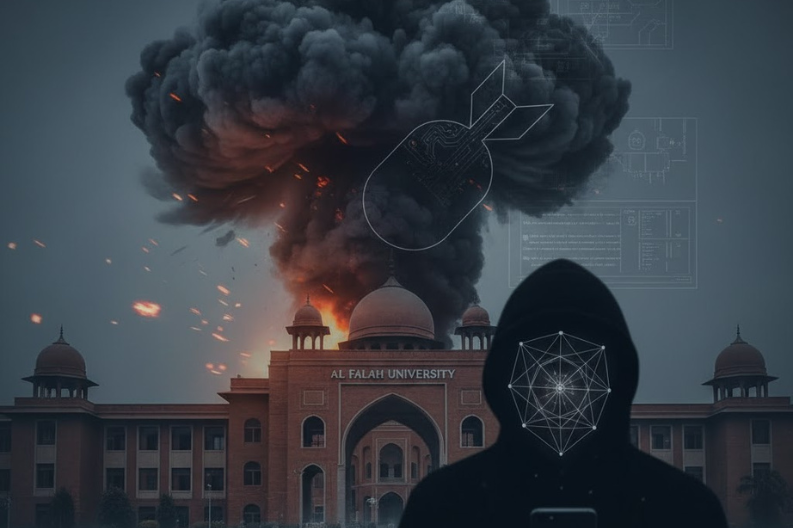In a major update, the Delhi blast investigation links Shadab Baig to Al Falah University, bringing new attention to his suspected role in multiple terror attacks. Investigators learned that Mirza Shadab Baig, who is accused of the 2008 Ahmedabad blasts and the 2007 Gorakhpur blast, studied at this university. His B.Tech degree from Al Falah University in 2007 has raised concerns about others from the same institution who may also have links to extremist groups.
Authorities say Baig may have close ties with the Indian Mujahideen, a group involved in several violent attacks across India. Earlier investigations into the Ahmedabad blasts had already placed him on the radar. Now, with fresh information from the Red Fort blast case, agencies are examining whether more individuals from Al Falah University have similar backgrounds.
The focus on this university has grown because investigators recently found the names of other former students with suspicious histories. This discovery has pushed officials to study the institution’s records more closely. They want to understand who these individuals interacted with, how they stayed connected, and whether they used their education to support harmful activities.
The 2008 Ahmedabad blasts killed 56 people and left many injured. These explosions, carried out during a busy evening, caused widespread fear and panic. Because of their impact, agencies continue to track every possible lead. Meanwhile, the Gorakhpur blast in 2007 added another layer to Baig’s suspected involvement in coordinated violence.
Although universities are meant to guide students toward progress, a few individuals may misuse their skills. Therefore, authorities now want educational institutions to work more actively with law-enforcement agencies. This cooperation can help detect early signs of extremist influence, especially in courses involving technology, communication, or engineering.
The Indian Mujahideen has carried out several attacks over the years. Their goal has often involved creating division and spreading fear. Because of that, both security agencies and communities must work together. Public awareness plays a big role. When people stay alert and report unusual behavior, they can help prevent future threats.
As the investigation continues, officials will review Baig’s contacts, travel history, and communication patterns. They are also analyzing whether he kept in touch with anyone from Al Falah University after graduating. This step is important because terror networks often rely on personal connections to recruit or hide.
The case now serves as a reminder that protecting society requires constant attention, strong institutions, and responsible communities. More importantly, it highlights how education and safety must move forward together.
In conclusion, the Delhi blast investigation links Shadab Baig to Al Falah University, and this finding may shape future inquiries into terror networks and their hidden support systems.



